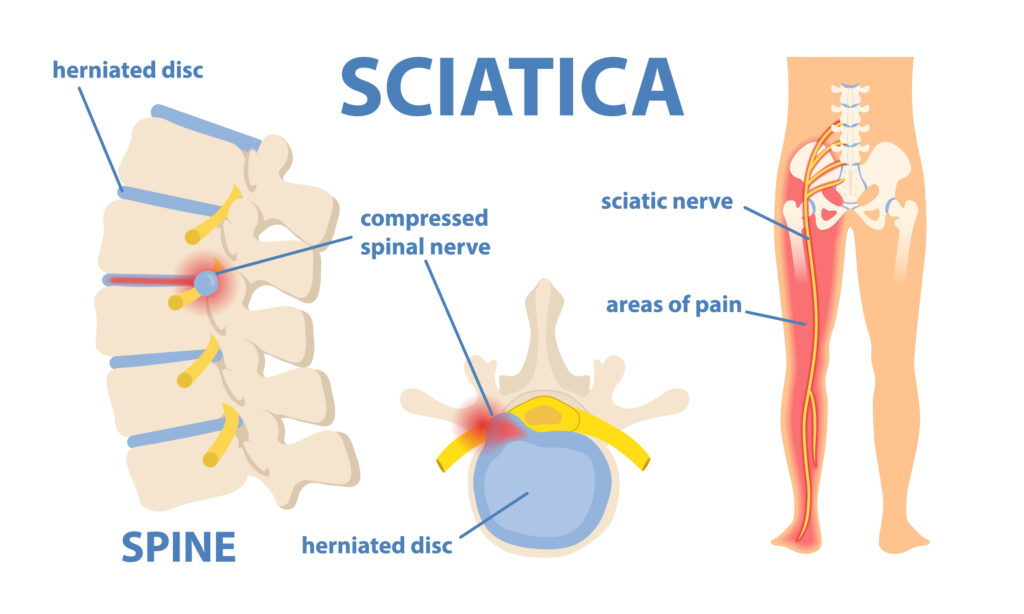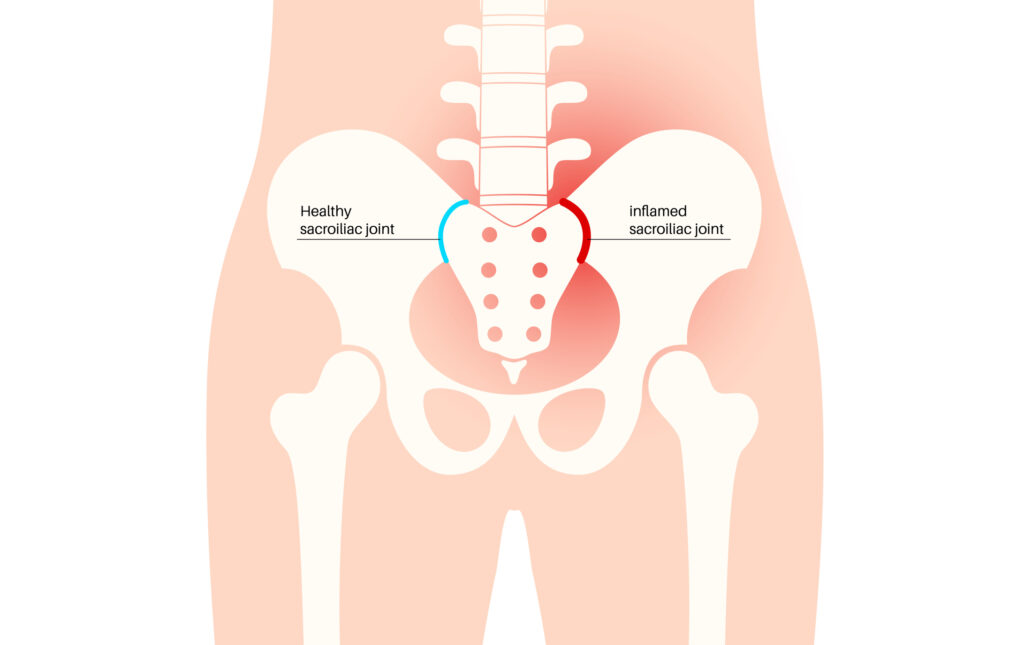Living with Sciatica and How Chiropractic Care Can Help
Rosanna, Australia - January 15, 2025 / Rosanna Chiropractic /
How Chiropractic Care Can Help with Sciatica and Related Conditions
Sciatica is a painful condition that affects millions of people worldwide. Characterised by a sharp, shooting pain that radiates along the path of the sciatic nerve—from the lower back through the hips and down each leg—sciatica can significantly impact a person’s mobility and quality of life. In addition to sciatica, related conditions like spinal arthritis, piriformis syndrome, and sacroiliac joint dysfunction can also cause discomfort and limit movement.
Chiropractic care offers an effective approach for those looking for a non-invasive, drug-free solution to managing these conditions. Chiropractors focus on diagnosing and treating the underlying causes of musculoskeletal pain, using manual adjustments and other therapies to restore proper function and alleviate discomfort. In this article, we’ll explore how chiropractic care can help manage sciatica, spinal arthritis, piriformis syndrome, and sacroiliac joint dysfunction, backed by studies demonstrating chiropractic treatment's benefits for these conditions.

Understanding Sciatica
Sciatica occurs when the sciatic nerve, the largest nerve in the body, becomes compressed or irritated. This nerve runs from the lower back, through the hips and buttocks, and down each leg. The pain associated with sciatica can range from mild discomfort to severe, incapacitating pain. It is often accompanied by numbness, tingling, or weakness in the affected leg.
Common Causes of Sciatica
- Herniated or bulging discs: When spinal discs become damaged, they can press on the sciatic nerve, causing pain and inflammation.
- Spinal stenosis: Narrowing of the spinal canal can compress nerves, including the sciatic nerve.
- Piriformis syndrome: Tightness or spasms in the piriformis muscle (located in the buttock) can irritate the sciatic nerve.
- Sacroiliac joint dysfunction: Improper movement of the sacroiliac joint, which connects the pelvis to the spine, can trigger sciatic nerve pain.
How Chiropractic Care Can Help with Sciatica
Chiropractic care offers a comprehensive, non-invasive treatment option for sciatica. Chiropractors focus on realigning the spine and restoring normal function to the musculoskeletal system, which can relieve pressure on the sciatic nerve and reduce inflammation. Here’s how chiropractic care can help with sciatica:
1. Spinal Adjustments
The cornerstone of chiropractic care is spinal manipulation, or adjustments. Misalignments in the spine, often caused by herniated discs or poor posture, can irritate the sciatic nerve. Chiropractors use precise manual adjustments to realign the spine, which helps relieve nerve pressure and reduce pain.
A study published in The Journal of Manipulative and Physiological Therapeutics found that chiropractic spinal adjustments provided significant pain relief for patients with sciatica caused by lumbar disc herniation. The study revealed that patients experienced a marked improvement in pain levels and mobility after chiropractic treatment.
2. Decompression Therapy
For patients with sciatica caused by herniated or bulging discs, chiropractors may use spinal decompression therapy. This technique gently stretches the spine to create negative pressure within the disc, allowing the disc material to retract and relieve pressure on the sciatic nerve.
Decompression therapy can help promote healing in the affected area, reduce inflammation, and alleviate sciatic pain.
3. Targeted Exercises and Stretching
In addition to spinal adjustments, chiropractors often recommend exercises and stretches to help manage sciatica. Strengthening the core and lower back muscles can improve spinal support, while stretches targeting the hamstrings, piriformis muscle, and hips can relieve pressure on the sciatic nerve.
Chiropractors customize these exercise programs to each patient’s specific condition, ensuring that they complement the adjustments and provide long-term relief.

Chiropractic Care for Spinal Arthritis
Spinal arthritis, also known as osteoarthritis of the spine, occurs when the cartilage that cushions the joints in the spine wears down over time. This can lead to pain, stiffness, and inflammation, which may radiate to other parts of the body. Arthritis in the spine can contribute to sciatica if the condition compresses the sciatic nerve.
How Chiropractic Care Can Help with Spinal Arthritis
Chiropractic care offers several benefits for managing spinal arthritis:
1. Spinal Adjustments to Improve Mobility
In patients with spinal arthritis, the vertebrae may become misaligned as the joints deteriorate. Chiropractic adjustments can help restore proper alignment and improve joint mobility. By reducing stiffness and increasing the range of motion, chiropractic care can alleviate pain and improve function.
A study published in The Journal of Chiropractic Medicine demonstrated that patients with osteoarthritis of the spine experienced significant reductions in pain and improvements in mobility following chiropractic treatment.
2. Reducing Inflammation and Pain
In addition to adjusting the spine, chiropractors use other techniques, such as soft tissue therapy and ultrasound, to reduce inflammation and relieve pain. These therapies can help alleviate the discomfort associated with spinal arthritis and promote healing.
3. Lifestyle and Nutritional Advice
Chiropractors take a holistic approach to health, often offering patients advice on lifestyle changes, nutrition, and supplements that can help manage arthritis. Anti-inflammatory diets and exercise recommendations can complement chiropractic treatments, supporting long-term pain relief.
Chiropractic Care for Piriformis Syndrome
Piriformis syndrome occurs when the piriformis muscle, located in the buttocks, spasms or becomes tight, irritating the nearby sciatic nerve. This leads to sciatica-like symptoms, including pain, tingling, and numbness down the leg. Piriformis syndrome is often caused by overuse, prolonged sitting, or trauma to the buttock area.
How Chiropractic Care Can Help with Piriformis Syndrome
Chiropractic care can be highly effective in treating piriformis syndrome by addressing both the muscle tension and spinal misalignments that contribute to the condition.
1. Spinal Adjustments and Muscle Release Techniques
In many cases, piriformis syndrome is linked to misalignments in the lower spine or pelvis. Chiropractors use spinal adjustments to correct these misalignments, which can help reduce the strain on the piriformis muscle. In addition, chiropractors may use soft tissue techniques, such as myofascial release, to relax the piriformis muscle and relieve pressure on the sciatic nerve.
A study published in the Journal of Chiropractic Medicine found that patients with piriformis syndrome who received chiropractic care, including spinal adjustments and muscle release techniques, experienced significant improvements in pain and mobility.
2. Stretching and Strengthening Exercises
Chiropractors often prescribe specific stretches to relieve tension in the piriformis muscle and exercises to strengthen the surrounding muscles, such as the glutes and core. These exercises help prevent future episodes of piriformis syndrome by improving muscle balance and flexibility.

Chiropractic Care for Sacroiliac Joint Dysfunction
Sacroiliac (SI) joint dysfunction occurs when the sacroiliac joint, which connects the spine to the pelvis, becomes inflamed or moves improperly. This can cause lower back pain, hip pain, and symptoms similar to sciatica.
How Chiropractic Care Can Help with Sacroiliac Joint Dysfunction
Chiropractors are experts in treating sacroiliac joint dysfunction through a combination of adjustments, mobilization techniques, and targeted exercises.
1. SI Joint Adjustments
Chiropractic adjustments can realign the sacroiliac joint, improving its mobility and relieving pain. By restoring normal movement to the SI joint, chiropractors help reduce inflammation and prevent further strain on the joint.
A study published in The Spine Journal found that chiropractic adjustments for patients with sacroiliac joint dysfunction resulted in significant pain reduction and improved joint function.
2. Stabilization and Strengthening Exercises
To complement SI joint adjustments, chiropractors often recommend exercises to strengthen the muscles that support the pelvis and lower back. Strengthening these muscles helps stabilize the SI joint and prevent future episodes of dysfunction.
3. Posture and Lifestyle Advice
Chiropractors can provide advice on proper posture, lifting techniques, and lifestyle modifications that reduce stress on the sacroiliac joint. These changes can help prevent SI joint dysfunction from recurring and promote long-term joint health.
Scientific Studies Supporting Chiropractic Care for Sciatica and Related Conditions
Several studies have demonstrated the effectiveness of chiropractic care in managing sciatica, spinal arthritis, piriformis syndrome, and sacroiliac joint dysfunction:
- Chiropractic Care for Sciatica
- Study:Chiropractic Manipulation for the Treatment of Sciatica: A Randomized Controlled Trial
- Published In: The Journal of Manipulative and Physiological Therapeutics
- Summary: This study found that patients with sciatica experienced significant pain relief and improved mobility after receiving chiropractic adjustments.
2. Chiropractic Care for Spinal Arthritis
- Study:Effectiveness of Chiropractic Care for Spinal Osteoarthritis
- Published In: Journal of Chiropractic Medicine
- Summary: Patients with spinal osteoarthritis experienced reductions in pain and stiffness following chiropractic adjustments, improving their quality of life.
3. Chiropractic Care for Piriformis Syndrome
- Study:Chiropractic Management of Piriformis Syndrome: A Clinical Case Study
- Published In: Journal of Chiropractic Medicine
- Summary: Chiropractic adjustments combined with muscle release therapy effectively relieved pain and improved function in patients with piriformis syndrome.
4. Chiropractic Care for Sacroiliac Joint Dysfunction
- Study:The Impact of Chiropractic Adjustments on Sacroiliac Joint Dysfunction
- Published In: The Spine Journal
- Summary: Chiropractic adjustments led to significant improvements in pain relief and joint function for patients with SI joint dysfunction.
Conclusion
Chiropractic care provides a natural, non-invasive approach to managing sciatica, spinal arthritis, piriformis syndrome, and sacroiliac joint dysfunction. Through spinal adjustments, soft tissue therapies, and personalized exercises, chiropractors help patients achieve pain relief, improved mobility, and better overall health. If you’re suffering from any of these conditions, consider consulting a chiropractor to explore how chiropractic care can offer long-term relief and enhance your quality of life. To learn more about your own symptoms please consult your local Chiropractor or call Rosanna Chiropractic Health Centre.

Contact Information:
Rosanna Chiropractic
40 Waiora Rd
Rosanna, VIC 3084
Australia
Alistair Huett
+61 3 9457 5585
https://chirohealth.com.au/
Original Source: https://chirohealth.com.au/blog/how-chiropractic-care-can-help-with-sciatica-and-related-conditions/


